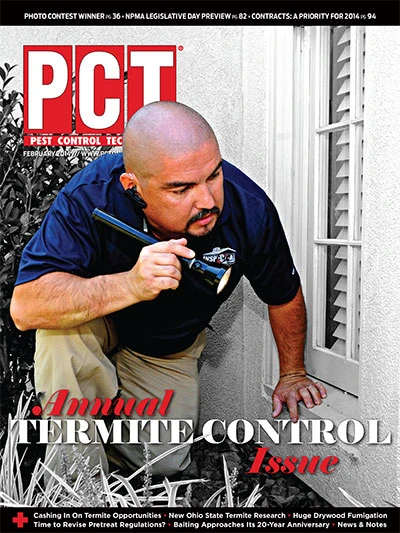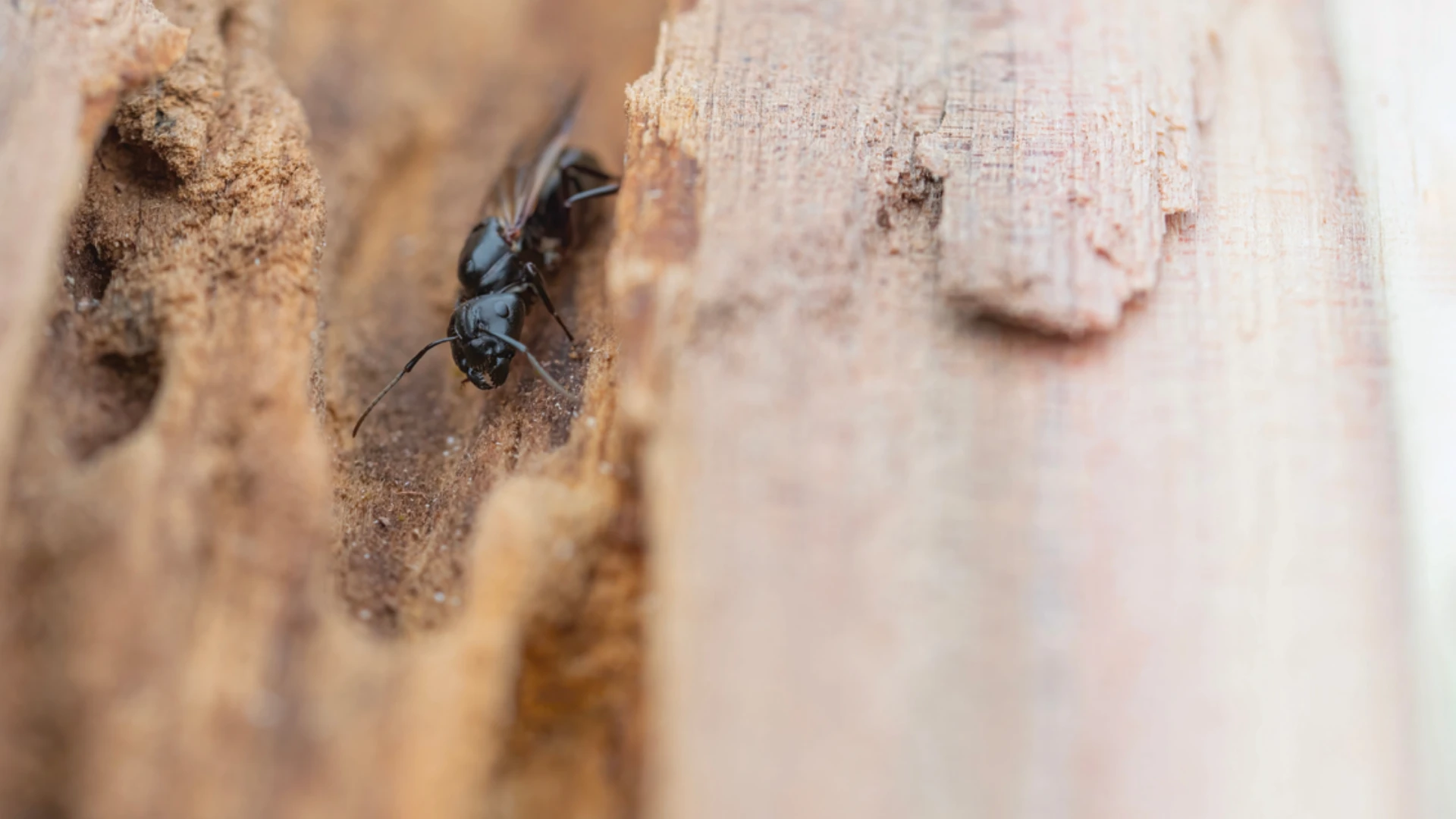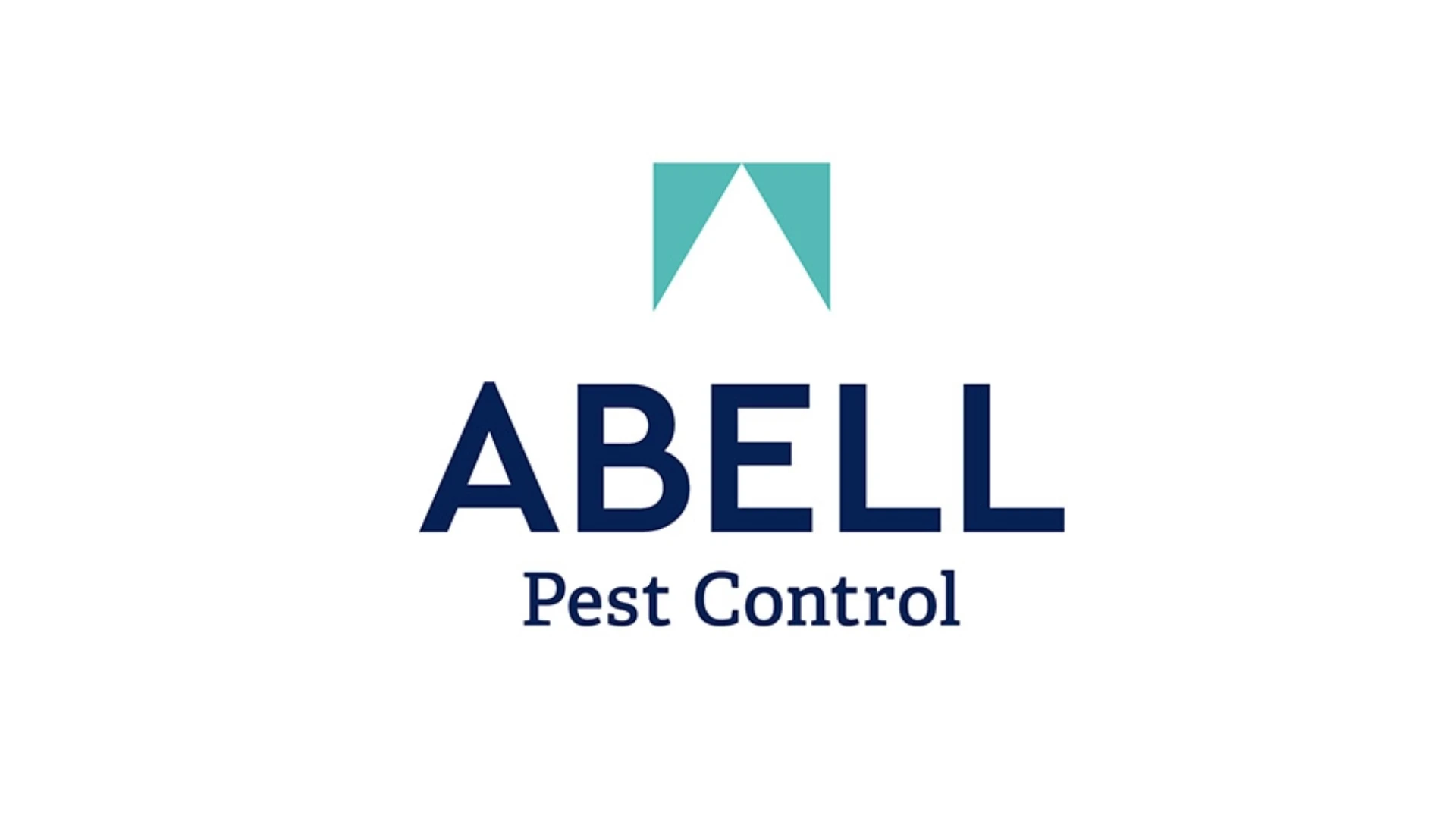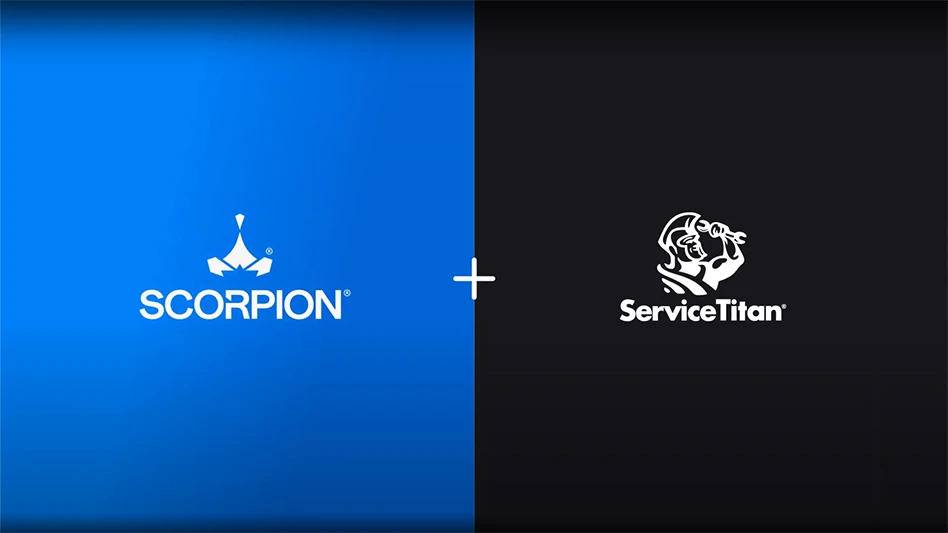 About 30 species of termites in the continental United States are considered economic pests; subterranean termites are the most economically important. Most pest species of subterranean termites belong to the genus Reticulitermes, which are found in every state in the continental United States (Wang et al. 2009).
About 30 species of termites in the continental United States are considered economic pests; subterranean termites are the most economically important. Most pest species of subterranean termites belong to the genus Reticulitermes, which are found in every state in the continental United States (Wang et al. 2009).
As social insects, subterranean termites live below ground in colonies that occupy multiple nesting and feeding sites (DeHeer and Vargo 2004) that may change over time. Colony size is highly variable and may range from thousands of individuals in younger colonies to millions of individuals in mature colonies.
Termites live in complex societies and engage in constant, close-contact interactions with other nest mates. These interactions include mutual grooming, cooperative nest construction, larval care and, most notably, trophallaxis, or mutual feeding. These behaviors make termites one of the most successful groups of organisms, but, they also can be exploited to spread pathogens and insecticides within termite colonies. Foraging members of termite colonies (workers) can translocate insecticides to other members of the colony, especially to reproductives and soldiers.
Management Options.
For more than 60 years, the standard method of controlling subterranean termites was to apply liquid termiticides to the soil. The goal is to create a continuous chemical barrier that the termites have to cross when foraging in and around the infested structure. While liquid treatment techniques have changed very little, tremendous progress has been made in the chemicals used: from chlorinated hydrocarbons to repellent pyrethroids and finally to non-repellent chemistries such as chlorfenapyr, fipronil, imidacloprid and chlorantraniliprole. When non-repellent termiticides are used, the termites tunnel through the soil without detecting the insecticide, become contaminated with it and subsequently spread it to others in the colony, a process known as horizontal transfer (e.g., Saran and Rust 2007, Buczkowski et al. 2012).
Subsequently, horizontal transfer results in secondary mortality in situations where a lethal dose of the active ingredient is transferred from the exposed donor termites to the unexposed recipient termites through social interactions such as mutual grooming and trophallaxis. Barrier treatments typically are highly effective against termites, but potential drawbacks include difficulty in achieving a complete barrier, pesticide degradation over time, disruption resulting from treatments (e.g., drilling and trenching), the need to apply large amounts of pesticide, objections from some homeowners and possible environmental issues.
Termite baits were developed as an alternative to liquid barrier treatments. And while liquid treatments take an essentially defensive approach to fend off termites, termite baits target the colony itself. Baits have evolved considerably over the last 20 years to become an established method of protection for remediation and preventive control.
|
Termite Baiting FAQ Termite baiting may be misunderstood by homeowners and pest management professionals who have little experience with it. Here are two frequently asked questions: 1. How do termites find the baits? Subterranean termites excavate narrow tunnels through the soil as they forage for food and eventually encounter food materials, be it natural sources or termite baits. Colonies forage in a mobile and ameboid fashion (Thorne et al. 1999) and different colonies typically maintain discrete, nonoverlapping foraging areas (DeHeer and Vargo 2004). The time for bait discovery will vary from property to property and will depend on a number of factors. These include time of year, moisture, termite foraging intensity and food availability. Results from field tests across the country show high variability in time required to get bait “hits,” but the termites eventually find the stations as they constantly explore their foraging area. For example, in a study by Eger et al. (2011), 60 percent of baits were discovered and colonized within 90 days. 2. How well do termites feed on baits, especially in the presence of competing food sources such as woodpiles, stumps or the house itself? Despite having a reputation for being voracious and indiscriminate feeders, termites are picky eaters and carefully assess the wood before they feed on it (Evans et al. 2007). Natural food sources may not always be attractive to termites for a number of reasons. It may be an unpalatable species of wood, contain defensive chemicals made by plants, be too hard or too decayed or damaged by fungi. In contrast, baits have been engineered over the years and offer a tasty alternative to what is available in nature. Baits are like “junk food” that termites crave because they are highly palatable and provide termites with an easily digestable form of cellulose. |
Termite baits work similarly to ant baits in that an attractive food source is mixed with a slow-acting active ingredient that is taken up by the foraging workers and delivered to the rest of the colony. This decreases termite numbers.
Multiple baits and actives have been introduced for the professional market and include Sentricon (0.5 percent noviflumuron, Dow AgroSciences), FirstLine (0.01 percent sulfluramid, FMC) and Advance (0.25 percent diflubenzuron, BASF). Among these, Sentricon was the first to market (it was introduced in 1995) and has been the most extensively tested termite bait (e.g., Su 2003, Vargo 2003, Getty et al. 2007, Husseneder et al. 2007). Sentricon’s newest baiting technology, Recruit HD, utilizes noviflumuron, a chitin synthesis inhibitor, in a cellulose matrix, which has been shown to be preferable to termites over wood in choice tests (Eger et al. 2011). In a recent study by Eger et al. (2012), 122 subterranean termite colonies throughout the United States were baited with 0.5 percent noviflumuron with 63 percent of colonies being eliminated within three months and all being eliminated in less than one year after initiation of baiting (using a quarterly monitoring schedule). Termite bait benefits include virtually no non-target effects, being nonintrusive to homes and structures, and significant ecological benefits.
How Baiting Works.
Termite baiting works by killing the workers in the termite colony, which are responsible for feeding the soldiers, and reproductives, which are incapable of feeding independently (Buczkowski et al. 2007). When enough workers have been killed, the flow of food to the colony is disrupted and the colony slowly starves and crashes, including the queen(s) and the soldiers.
Bait stations typically are placed at 10-foot intervals around a structure. From a biological perspective this spacing is important because it ensures that termites will find one or more bait stations as they randomly forage around the structure. While the foraging range of a single termite colony is difficult to predict — smaller colonies may have a foraging “footprint” no larger than several yards — larger colonies may forage across hundreds of yards.
Overall, there is a positive association between colony age and its lateral spread (Bulmer and Traniello 2002) and a termite colony that is large enough to infest a structure has a foraging distance that is easily greater than 10 feet in distance (e.g., Haverty et al. 2000, Tsunoda et al. 1999, DeHeer and Vargo 2004). The more bait stations that are installed, the better the chances of locating termites. However, intervals narrower than 10 feet are not necessary as termites would be at most 5 feet away from a station even if they foraged directly between two stations. With proper installation is it extremely likely that termites will find one or more bait stations as they continuously forage around the structure.
Conclusion.
Termite baits have evolved considerably over the last 20 years and have been developed as a stand-alone option for termite remediation and prevention. Termite baits are expected to undergo further improvements as research expands our basic understanding of termite foraging biology, behavior and genetics.
Author’s note: Where trade names are used, no endorsement is intended, nor criticism implied of similar products not named.
The author is with the Center for Urban and Industrial Pest Management, Department of Entomology, Purdue University. Email him at gbuczkowski@giemedia.com.
References
Buczkowski G., Wang C. and Bennett G.W. 2007. Immunomarking reveals food flow and feeding relationships in the eastern subterranean termite, Reticulitermes flavipes (Kollar). Environ.Entomol. 36: 173–182.
Buczkowski G., Scherer C. and Bennett G.W. 2012. Toxicity and horizontal transfer of chlorantraniliprole in the eastern subterranean termite. J. Econ. Entomol. 105: 1736–1745.
Bulmer M.S. and Traniello J.F.A. 2002. Foraging range expansion and colony genetic organization in the subterranean termite, Reticulitermes flavipes (Isoptera: Rhinotermitidae). Environ. Entomol. 31: 293–298.
DeHeer C.J. and Vargo E.L. 2004. Colony genetic organization and colony fusion in the termite Reticulitermes flavipes as revealed by foraging patterns over time and space. Mol. Ecol. 13: 431–441.
Eger J.E. Jr., Lees M.D., Fisher M.L., Messenger M.T. and Tolley M.P. 2011. Discovery and consumption of a novel durable bait matrix by subterranean termites (Isoptera: Rhinotermitidae). Sociobiology 58: 651–666.
Eger J.E. Jr., Lees M.D., Neese P.A., Atkinson T.H., Thoms E.M., Messenger M.T., DeMark J.J., Lee L.-C., Vargo E.L. and Tolley M.P. 2012. Elimination of subterranean termite (Isoptera: Rhinotermitidae) colonies using a refined cellulose bait matrix containing noviflumuron when monitored and replenished quarterly. J. Econ. Entomol. 105: 533–539.
Evans T.A., Lai J.C.S., Toledano E., McDowall L., Rakotonarivo S. and Lenz M. 2005. Termites assess wood size using vibration signals. Proc. Natl. Acad. Sci. USA, 102: 3732–3737.
Getty G.M., Solek C.W., Sbragia R.J., Haverty M.I. and Lewis V.R. 2007. Large-scale suppression of a subterranean termite community using Sentricon Termite Colony Elimination System: A case study in Chatsworth, California, USA. Sociobiology, 50: 1041–1050.
Haverty M.I., Getty G.M., Copren K.A. and Lewis V.R. 2000. Size and dispersion of colonies of Reticulitermes spp. (Isoptera: Rhinotermitidae) in a wildland and a residential location in northern California. Environ. Entomol. 29: 241–249.
Husseneder C.J., Simms D.M. and Riegel C. 2007. Evaluation of treatment success and patterns of reinfestation of the Formosan subterranean termite (Isoptera: Rhinotermitidae). J. Econ. Entomol. 100: 1370–1380.
Karr L.L., Sheets J.J., King J.E. and Dripps J.E. 2004. Laboratory performance and pharmcokinetics of the benzoylphenylurea noviflumuron in eastern subterranean termites (Isoptera: Rhinotermitidae). J. Econ. Entomol. 97: 593–600.
Saran R.K. and Rust M.K. 2007. Toxicity, uptake and transfer efficiency of fipronil in western subterranean termite (Isoptera: Rhinotermitidae). J. Econ. Entomol. 100: 495–508.
Su N-Y. 2003. Baits as a tool for population control of the Formosan subterranean termite. Sociobiology 41: 177–191.
Thorne B.L., Traniello J.F.A., Adams E.S. and Bulmer M. 1999. Reproductive dynamics and colony structure of subterranean termites of the genus Reticulitermes (Isoptera: Rhinotermitidae), a review of the evidence from behavioral, ecological, and genetic studies. Ethol. Ecol. Evol. 11: 149–169.
Tsunoda K., Matsuoka H., Yoshimura T. and Tokoro M. 1999. Foraging populations and territories of Reticulitermes speratus (Isoptera: Rhinotermitidae). J. Econ. Entomol. 92: 604–609.
Vargo E.L. 2003. Genetic structure of Reticulitermes flavipes and R. virginicus (Isoptera: Rhinotermitidae) colonies in urban habitat and tracking of colonies following treatment with hexaflumuron bait. Environ. Entomol. 32: 1271–1282.
Wang C., Zhou X., Li S., Schwinghammer M., Scharf M., Buczkowski G. and Bennett G.W. 2009. Survey and identification of termites (Isoptera: Rhinotermitidae) from Indiana. Ann. Entomol. Soc. Am. 102: 1029–1036.
Want to learn more?
To learn more about urban entomology at Purdue University visit:
www.entm.purdue.edu/entomology /urban/home.html
To learn more about Dr. Buczkowski’s research program visit:
www.entm.purdue.edu/ants
Get curated news on YOUR industry.
Enter your email to receive our newsletters.

Explore the February 2014 Issue
Check out more from this issue and find your next story to read.
Latest from Pest Control Technology
- Rose Pest Solutions Becomes Official Pest Provider of Chicago Fire FC
- WSPMA Hosts Legislative Day at Washington State Capitol
- A-1 Pest Control Marks 59 years in Business
- Hawaii PCO Shares Regulatory Challenges, Business Impacts from Lahaina Wildfires
- 5 Tips for Reducing Waste in the Office and in the Field
- OvoControl Now Available in Chile
- Envu Announces Savings Programs for Pest Management Professionals
- Follow the Trail






